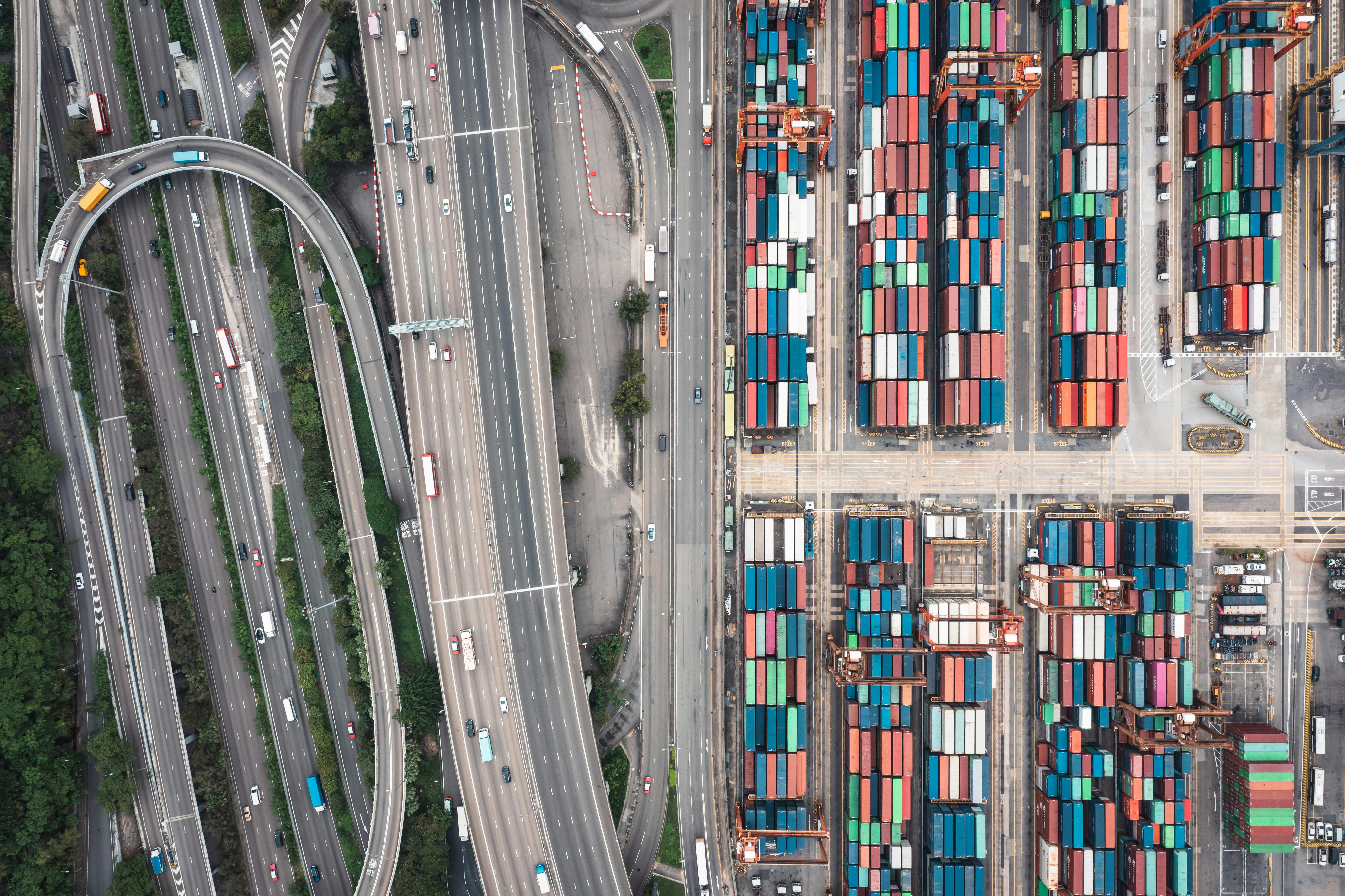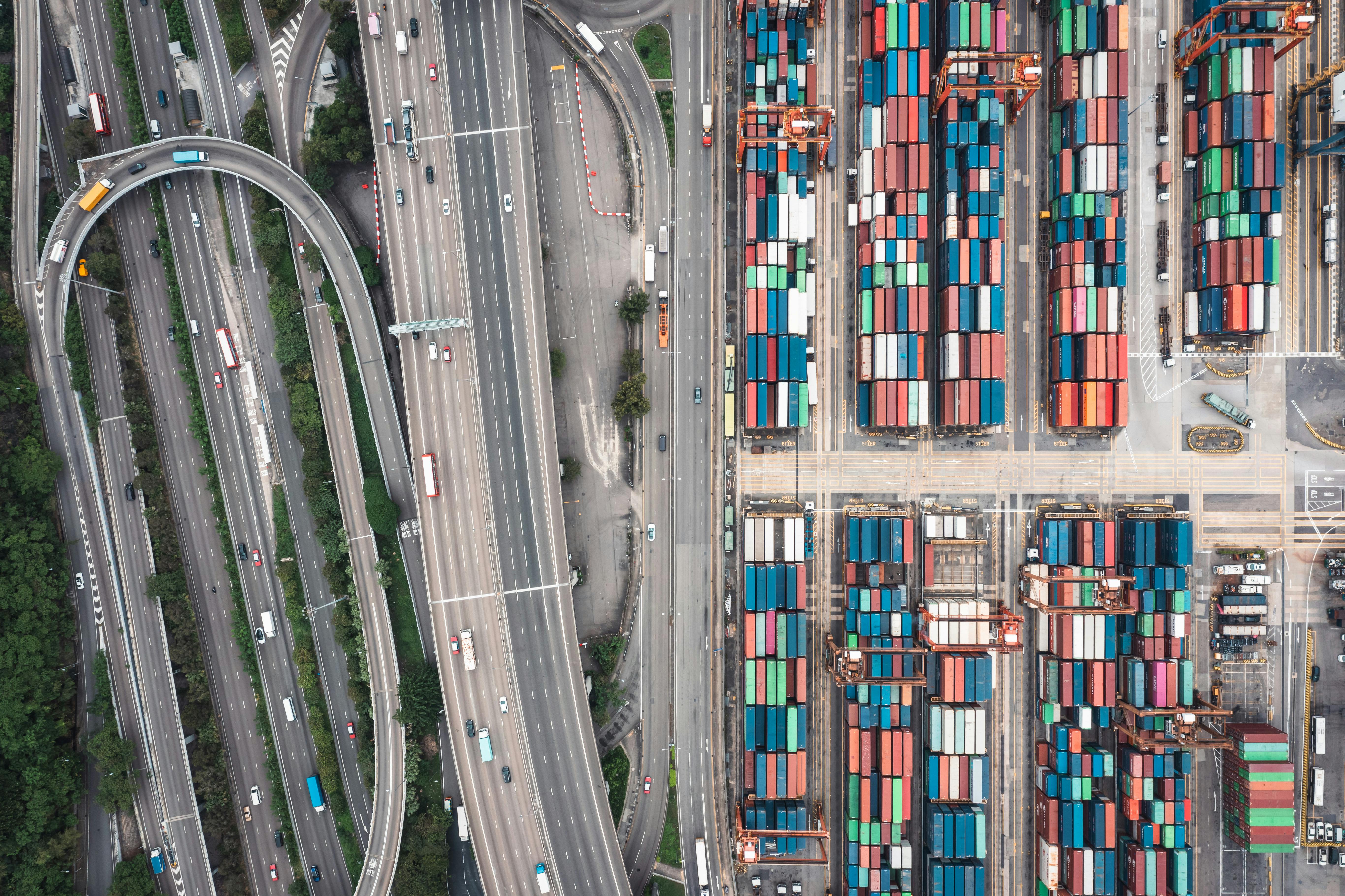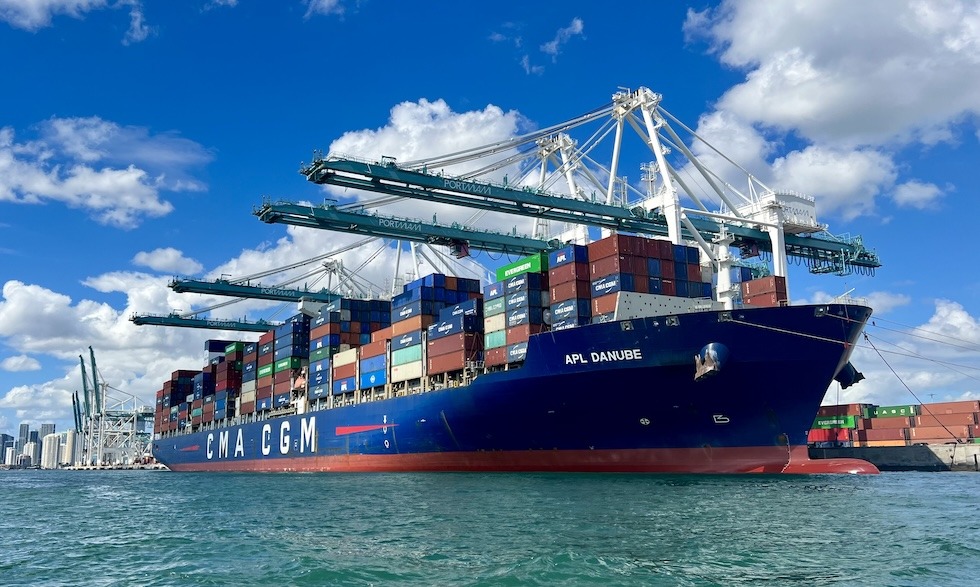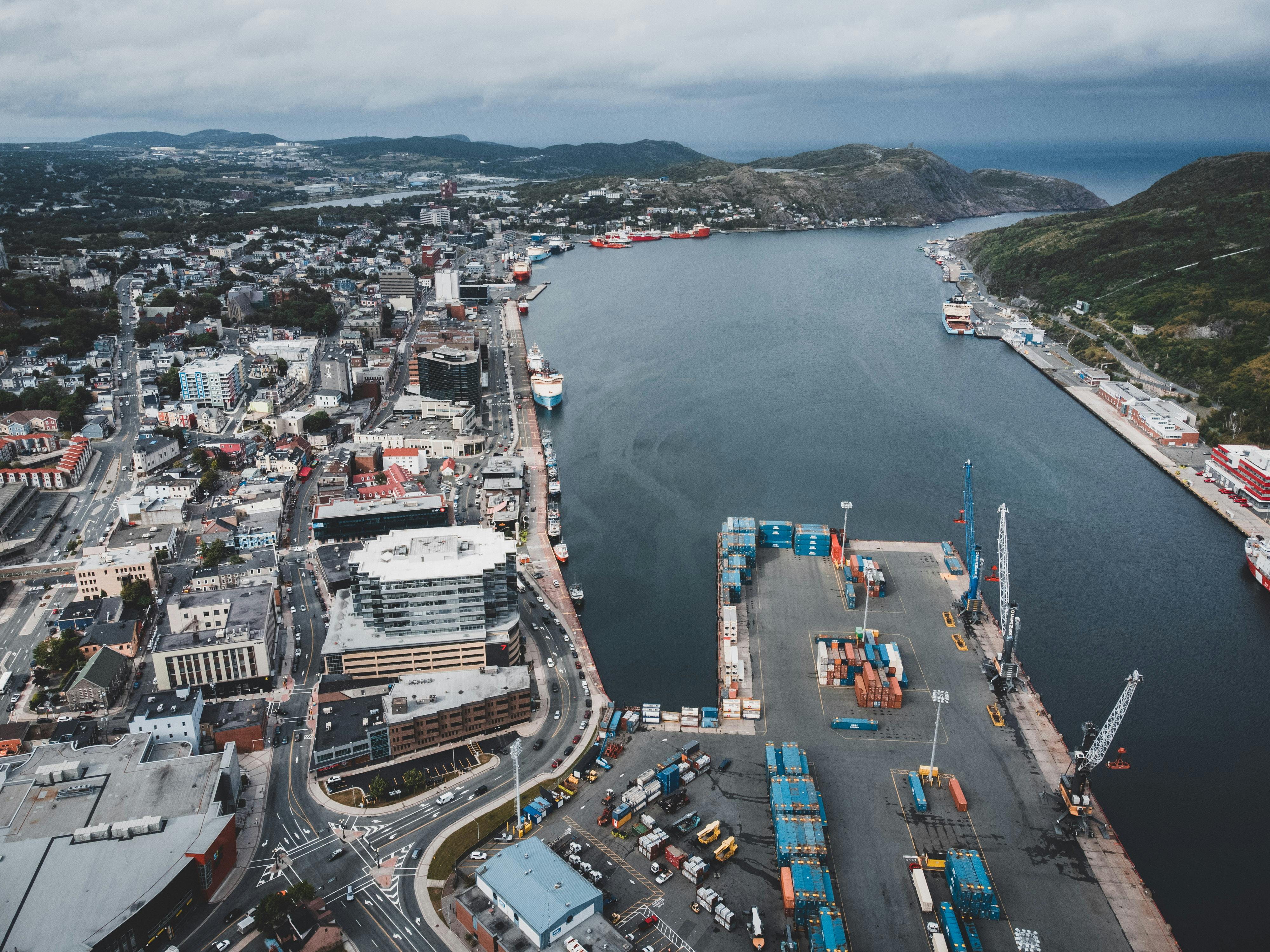International Automotive Logistics: Global Vehicle Relocation Guide
In today's interconnected global automotive market, vehicles routinely cross oceans and continents before reaching their final destinations. International automotive logistics—the complex process of moving vehicles from manufacturing facilities to showrooms worldwide—represents a sophisticated orchestration of transportation modes, regulatory compliance, and specialized handling. For dealerships, importers, and automotive businesses, understanding this intricate process is crucial for successful global vehicle sourcing and distribution.
This comprehensive guide explores the complete journey of vehicles through the global supply chain, from factory production lines to dealer showrooms, highlighting the critical role that specialized logistics providers play in ensuring seamless international vehicle movement.
The Global Vehicle Supply Chain: An Overview
International automotive logistics encompasses the entire process of moving finished vehicles from manufacturing plants to end markets across international borders. This specialized field has evolved significantly as automotive production has globalized, with vehicles often assembled in one country using components from dozens of others before being sold in yet another market.
The global vehicle supply chain typically includes several key stages:
-
Factory Production and Release: Vehicles complete assembly and undergo initial quality control
-
Factory Yard Management: Temporary storage and organization by destination
-
Primary Transportation: Movement to ports or consolidation centers
-
International Transit: Ocean, air, or land border crossing
-
Destination Processing: Customs clearance and compliance verification
-
Final Delivery: Transportation to dealerships or distribution centers
Each stage requires specialized expertise, equipment, and regulatory knowledge to ensure vehicles move efficiently while maintaining their condition and value.
Multimodal Transportation in Global Vehicle Logistics

International vehicle logistics relies on multiple transportation modes, each offering distinct advantages for different scenarios. Understanding these options helps automotive businesses select the most appropriate methods for their specific needs.
Ocean Transportation: The Backbone of Global Vehicle Movement
Maritime shipping forms the foundation of international vehicle logistics, with specialized vessels moving millions of vehicles across oceans annually. Two primary methods dominate ocean vehicle transport:
Container Shipping
Container shipping provides maximum protection for vehicles during international transit. Vehicles are carefully loaded and secured inside standard shipping containers, protecting them from exposure to elements, potential theft, and handling damage.
Container shipping offers several key advantages:
-
Superior Protection: Fully enclosed environment shields vehicles from salt spray, weather, and potential damage
-
Enhanced Security: Sealed containers reduce theft risk and unauthorized access
-
Flexible Routing: Containers can move on any container vessel, offering more frequent sailing options
-
Inland Compatibility: Seamless transfer to rail or truck without vehicle handling
For high-value vehicles, luxury models, or shipments to regions with security concerns, container shipping represents the premium choice for international transport.
Roll-on/Roll-off (RoRo) Shipping
RoRo vessels function essentially as floating parking garages, with vehicles driven directly onto specialized ships designed with multiple decks connected by internal ramps. This method offers cost advantages for standard vehicle shipments when maximum protection isn't required.
RoRo shipping features:
-
Cost Efficiency: Generally lower cost than container shipping for standard vehicles
-
Speed: Faster loading and unloading processes
-
Volume Capacity: Purpose-built vessels can carry thousands of vehicles
-
Operational Requirements: Vehicles must be in running condition
Many automotive manufacturers rely on RoRo shipping for their primary distribution, particularly for high-volume models where cost efficiency is paramount.
Air Freight: Premium Speed for Urgent Shipments
While representing a small percentage of global vehicle movements, air freight plays a crucial role in international automotive logistics for time-sensitive or ultra-high-value shipments. This premium option reduces transit times from weeks to mere days.
Air freight is typically reserved for:
-
Luxury and Exotic Vehicles: When value justifies the premium cost
-
Prototype and Show Cars: For global exhibitions and events
-
Racing Vehicles: Meeting tight competition schedules
-
Urgent Dealer Requirements: Fulfilling specific customer orders with tight deadlines
The significant cost premium of air freight (often 5-10 times higher than ocean shipping) limits its use to situations where time sensitivity or vehicle value justifies the expense.
Rail Transportation: Efficient Continental Movement
Rail transport provides an efficient solution for moving vehicles across continental landmasses. In regions with developed rail networks like Europe, North America, and parts of Asia, specialized auto-rack cars transport vehicles over long distances with good fuel efficiency and environmental performance.
Key advantages of rail transport include:
-
Fuel Efficiency: Lower carbon footprint per vehicle compared to trucking
-
Volume Capacity: Single trains can move hundreds of vehicles simultaneously
-
Reduced Road Congestion: Minimizes impact on highway infrastructure
-
Weather Reliability: Less susceptible to weather delays than road transport
Rail transportation often serves as the middle link in international logistics chains, connecting ports with inland distribution centers.
Inland Transportation: First and Last Mile Connections
Road transportation provides critical first and last-mile connections in the international vehicle logistics chain. Specialized car carriers move vehicles between factories, ports, rail terminals, and final destinations.
Inland transportation options include:
-
Open Car Carriers: Cost-effective for standard vehicles over shorter distances
-
Enclosed Transporters: Premium protection for high-value vehicles
-
Flatbed Trailers: Used for non-operational vehicles or special equipment
-
Drive-Away Services: Professional drivers operating vehicles directly
The flexibility of road transport makes it an essential component of any international vehicle movement, regardless of the primary international shipping method used.
Customs Clearance and Regulatory Compliance
One of the most complex aspects of international automotive logistics involves navigating the regulatory requirements for moving vehicles across international borders. Each country maintains distinct regulations governing vehicle imports, often with stringent requirements for safety, emissions, and technical specifications.
Import Documentation Requirements
Successful international vehicle logistics requires meticulous documentation preparation. Common requirements include:
-
Commercial Invoice: Detailing vehicle value and specifications
-
Bill of Lading or Air Waybill: Transport contract and receipt
-
Certificate of Origin: Verifying manufacturing country
-
Vehicle Title/Ownership Documents: Proving legal ownership
-
Compliance Certifications: Safety and emissions documentation
-
Import Licenses: When required by destination countries
Incomplete or incorrect documentation represents one of the most common causes of delays and additional costs in international vehicle logistics.
Customs Duties and Taxes
Vehicles typically face significant import duties and taxes when crossing international borders. These charges vary dramatically by country and can substantially impact the final landed cost of imported vehicles.
Factors affecting duties and taxes include:
-
Vehicle Type and Classification: Passenger cars, commercial vehicles, or special purpose
-
Engine Size and Type: Many countries impose higher duties on larger engines
-
Country of Origin: Free trade agreements may reduce or eliminate duties
-
Vehicle Age: Many countries restrict or impose higher duties on older vehicles
-
Emissions Standards: Non-compliant vehicles may face additional charges or import restrictions
West Coast Shipping maintains current knowledge of these complex regulations across major global markets, helping automotive businesses accurately forecast landed costs and avoid unexpected charges.
Compliance with Technical Standards
Beyond financial considerations, vehicles must meet destination country technical standards for legal importation. These requirements vary significantly between markets and may include:
-
Emissions Standards: Meeting local environmental regulations
-
Safety Equipment: Required features like airbags, ABS, or stability control
-
Lighting Requirements: Headlight patterns, marker lights, and reflectors
-
Dimensional Restrictions: Maximum height, width, or length
-
Right-Hand vs. Left-Hand Drive: Configuration requirements or restrictions
Vehicles not meeting local standards may require modifications, limiting importation to specific age exemptions, or face outright import prohibition. Understanding these requirements before shipping is essential for successful international vehicle logistics.
Vehicle Processing and Preparation
Between international transit and final delivery, vehicles typically undergo several processing steps to prepare them for sale or use in the destination market.
Vehicle Inspection and Condition Reporting
Upon arrival at destination facilities, vehicles undergo detailed inspection to verify condition after transit. This critical step documents any transport damage and establishes the vehicle's condition before final delivery.
Comprehensive inspections typically include:
-
Exterior Condition: Documenting any damage to body panels, glass, or trim
-
Mechanical Verification: Basic systems checks to confirm proper operation
-
Inventory Verification: Confirming all components and accessories are present
-
Digital Documentation: Photos and condition reports for quality assurance
These inspections protect all parties in the logistics chain by clearly establishing vehicle condition at each transfer point.
Pre-Delivery Modifications and Preparation
Vehicles often require market-specific modifications or preparation before final delivery to dealerships. These services might include:
-
Local Specification Conversions: Adjusting headlights, speedometers, or other components
-
Accessory Installation: Adding dealer-requested or market-required equipment
-
Software Updates: Installing latest manufacturer programming
-
Protective Covering Removal: Removing factory or transport protection
-
Detailing and Preparation: Cleaning and preparing for showroom presentation
These value-added services ensure vehicles arrive at dealerships ready for immediate display and sale, reducing dealer preparation requirements.
Destination Handling and Final Delivery
The final stage of international automotive logistics involves coordinating delivery to end destinations—typically dealerships, distribution centers, or in some cases, directly to customers.
Dealer Delivery Coordination
Coordinating final delivery requires balancing transportation efficiency with dealer preferences and requirements. Key considerations include:
-
Delivery Scheduling: Coordinating with dealer receiving capabilities
-
Unloading Requirements: Ensuring appropriate facilities for safe vehicle unloading
-
Documentation Transfer: Providing all necessary vehicle and transport documentation
-
Condition Verification: Final inspection and acceptance process
-
Special Handling Instructions: Addressing any unique vehicle requirements
Effective communication throughout this process ensures vehicles arrive when expected and in proper condition.
Pre-Delivery Inspection (PDI)
Upon arrival at dealerships, vehicles undergo a final Pre-Delivery Inspection before customer presentation. This dealer-performed process typically includes:
-
Comprehensive Mechanical Inspection: Verifying all systems function properly
-
Fluid Checks and Adjustments: Ensuring proper levels and specifications
-
Software Verification: Confirming latest updates are installed
-
Accessory Verification: Checking all included equipment and options
-
Final Detailing: Complete cleaning and showroom preparation
This critical final step, typically taking 1-3 days depending on vehicle complexity, ensures vehicles meet customer expectations and manufacturer standards before sale.
Technology in International Automotive Logistics
Advanced technology plays an increasingly important role in managing the complexities of global vehicle logistics. Modern systems provide unprecedented visibility and control throughout the international supply chain.
Real-Time Tracking and Visibility
Today's automotive logistics providers offer sophisticated tracking capabilities that provide real-time location and status updates throughout the vehicle journey. These systems enable:
-
VIN-Level Tracking: Individual vehicle monitoring throughout transit
-
Milestone Alerts: Automated notifications at key process points
-
Exception Management: Early identification of potential delays or issues
-
Estimated Arrival Predictions: Dynamic ETA calculations based on current conditions
-
Documentation Access: Digital access to all relevant shipping documents
This visibility allows automotive businesses to better plan inventory management, marketing activities, and customer communications.
Inventory Management Systems
Specialized inventory management systems help automotive businesses track vehicles throughout the global supply chain, from production scheduling to final delivery. These systems provide:
-
Order Status Tracking: Monitoring vehicle progress from initial order
-
Allocation Management: Assigning vehicles to specific markets or dealers
-
Configuration Verification: Ensuring vehicles meet market specifications
-
Documentation Management: Organizing and accessing vehicle-specific documents
-
Financial Tracking: Monitoring costs throughout the logistics process
Integration between logistics providers and automotive businesses enhances efficiency and reduces administrative overhead.
Choosing the Right International Automotive Logistics Partner
Selecting the appropriate logistics partner represents one of the most consequential decisions for automotive businesses engaged in international vehicle movement. The right partner can streamline operations, reduce costs, and enhance vehicle condition upon arrival.
Specialized Automotive Expertise
Unlike general freight forwarders, dedicated automotive logistics providers offer specialized knowledge and capabilities specific to vehicle transportation. Key differentiators include:
-
Vehicle-Specific Equipment: Purpose-built handling and transport equipment
-
Specialized Facilities: Secure storage designed for vehicle protection
-
Technical Knowledge: Understanding of vehicle handling requirements
-
Regulatory Expertise: Familiarity with automotive import requirements
-
Industry Experience: Established processes refined through automotive focus
This specialization translates directly to better outcomes for international vehicle shipments.
Global Network and Capabilities
Effective international automotive logistics requires a robust global network of partners, facilities, and capabilities. When evaluating potential providers, consider:
-
Geographic Coverage: Presence in key origin and destination markets
-
Partner Relationships: Established connections with carriers and service providers
-
Volume Capabilities: Ability to handle required shipment quantities
-
Service Options: Availability of different transportation modes and services
-
Facility Network: Strategically located processing centers and warehouses
West Coast Shipping's global network enables seamless vehicle movement between major automotive markets worldwide, with established processes for both high-volume and specialty vehicle shipments.
Technology and Visibility Solutions
Modern automotive logistics demands sophisticated technology solutions that provide control and visibility throughout the supply chain. Evaluate potential partners based on:
-
Tracking Capabilities: Real-time vehicle location and status information
-
Documentation Systems: Digital management of required paperwork
-
Communication Tools: Proactive updates and exception notifications
-
Integration Options: Connectivity with dealer or business systems
-
Reporting Functions: Analytics and performance measurement
These technological capabilities enhance control while reducing administrative burden.
Volume-Based Efficiencies
For businesses shipping multiple vehicles, volume-based efficiencies can significantly reduce per-unit logistics costs. Look for providers offering:
-
Consolidated Shipping Options: Shared container or vessel space
-
Volume Pricing Tiers: Reduced rates for higher quantities
-
Regular Service Schedules: Consistent departure and arrival timing
-
Dedicated Capacity: Reserved space for regular shipments
-
Simplified Administration: Streamlined processes for repeat business
West Coast Shipping's wholesale program offers special rates to customers shipping 3 or more containers, providing substantial savings for businesses with regular import or export needs.
West Coast Shipping: Excellence in International Automotive Logistics
As a leader in international vehicle logistics, West Coast Shipping has established a comprehensive service offering designed specifically for the unique requirements of global automotive transportation.
Comprehensive End-to-End Services
West Coast Shipping provides complete logistics solutions covering every aspect of international vehicle movement:
-
Vehicle Collection: Pickup from any location nationwide
-
Secure Storage: Climate-controlled facilities with 24/7 security
-
Expert Container Loading: In-house teams using proven securing methods
-
International Shipping: Container, RoRo, and air freight options
-
Customs Clearance: Expert handling of import/export requirements
-
Destination Services: Processing, preparation, and final delivery
This integrated approach eliminates the complexity of coordinating multiple service providers while ensuring consistent quality throughout the process.
Strategic Facility Network
With strategically located facilities in key automotive markets, West Coast Shipping provides convenient access points for global vehicle logistics:
-
California Facility: Serving Pacific Rim markets and western US
-
Florida Facility: Supporting European and Latin American routes
-
New Jersey Facility: Facilitating transatlantic and eastern US logistics
-
Global Partner Facilities: Network of processing centers worldwide
These facilities offer over 230,000 sq. ft. of indoor and 710,000 sq. ft. of secured outdoor storage, providing ample capacity for vehicles awaiting international shipment.
Specialized Automotive Expertise
Unlike general freight forwarders, West Coast Shipping focuses exclusively on vehicle transportation, with specialized knowledge of handling requirements for standard, luxury, classic, and exotic cars. This automotive-specific expertise ensures vehicles receive appropriate handling throughout the logistics process.
Volume-Based Advantages
Businesses shipping multiple vehicles benefit significantly from West Coast Shipping's volume-based pricing. Their wholesale shipping program offers special rates to customers shipping 3 or more containers, providing substantial savings for businesses with regular import or export needs.
The Strategic Advantage of Effective International Automotive Logistics
In today's global automotive marketplace, effective international logistics represents a strategic advantage for automotive businesses. The ability to source vehicles globally, access diverse markets, and move inventory efficiently across borders creates opportunities for growth and differentiation.
Understanding the complexities of international automotive logistics—from multimodal transportation options to customs requirements and destination handling—enables businesses to make informed decisions that protect their valuable inventory while optimizing supply chain efficiency.
By partnering with specialized automotive logistics providers like West Coast Shipping, automotive businesses can transform international vehicle sourcing from a complicated challenge into a competitive advantage. With the right logistics partner, the global automotive marketplace becomes accessible, manageable, and profitable.
To learn more about optimizing your international automotive logistics, explore our complete guide to finished vehicle logistics or contact our team for a personalized consultation on your specific global vehicle transportation needs.
You May Also Like
These Related Stories

What Is Finished Vehicle Logistics? A Simple Guide for International Trade

Finished Vehicle Logistics Shipping Prices: What Impacts Rates?

-093789-edited.png?width=220&height=79&name=wcs_final_logo_(1)-093789-edited.png)